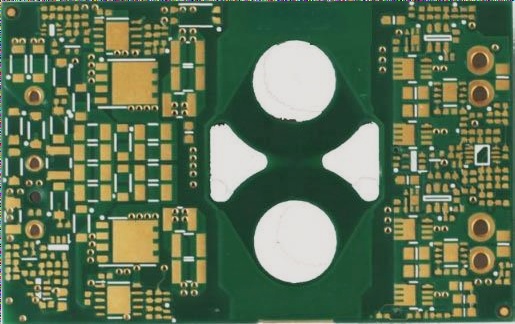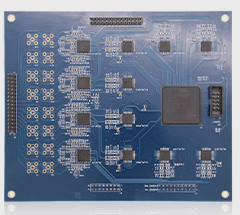The anti-interference problem is a crucial aspect of modern circuit design, directly impacting the performance and reliability of the entire system. For PCB engineers, mastering anti-interference design is essential yet challenging.
**The Presence of Interference in the PCB Board**
Research reveals four primary sources of interference in PCB design: power supply noise, transmission line interference, coupling, and electromagnetic interference (EMI).
1. **Power Supply Noise**
In high-frequency circuits, power supply noise significantly affects high-frequency signals. Therefore, the foremost requirement is a low-noise power supply. A clean ground is just as critical as a clean power source.
2. **Transmission Line**
In PCBs, there are two possible types of transmission lines: strip lines and microwave lines. The primary issue with transmission lines is reflection. Reflection can lead to various problems, such as the load signal becoming a combination of the original and echo signals, complicating signal analysis. Additionally, reflection causes return loss, which can impact signals as severely as additive noise interference.
3. **Coupling**
Interference signals generated by sources can cause electromagnetic interference to the electronic control system via specific coupling channels. Common methods of coupling include effects transmitted through wires, spaces, or common lines. The main types of coupling include direct coupling, common impedance coupling, capacitive coupling, electromagnetic induction coupling, and radiation coupling.
**Common Impedance Coupling**

**4. Electromagnetic Interference (EMI)**
Electromagnetic interference (EMI) can be categorized into two types: conducted interference and radiated interference. Conducted interference occurs when signals couple from one electrical network to another through a conductive medium. In contrast, radiated interference arises when a source transmits its signals to another network through space. In high-speed PCB and system design, high-frequency signal lines, integrated circuit pins, and various connectors may act as sources of radiation interference, emitting electromagnetic waves that can disrupt the normal operation of other systems or subsystems.
**PCB and Circuit Anti-Interference Measures**
The anti-jamming design of printed circuit boards is closely tied to the specific circuit configuration. Here, we will discuss several common strategies for PCB anti-jamming design.
1. **Power Line Design**
To minimize loop resistance, increase the width of power lines based on the current requirements of the printed circuit board. Additionally, align the power and ground lines with the data transmission direction to enhance noise immunity.
2. **Ground Wire Design**
The key principles for ground wire design are:
(1) Separate digital ground from analog ground. When both logic and linear circuits are present, they should be as far apart as possible. The ground for low-frequency circuits should be connected in parallel at a single point whenever feasible. If wiring poses challenges, partial series connections can be used before grounding in parallel. For high-frequency circuits, multiple series ground connections should be used; the ground wire should be short and direct, employing a grid-like ground plane around high-frequency components.
(2) Use thicker ground wires. A very narrow ground wire can cause potential variations with current changes, compromising noise resistance. Ground wires should ideally handle three times the allowable current for the PCB, with a width of 2-3 mm or more recommended.
(3) Create closed-loop grounding. For boards with only digital circuits, grounding should be configured in loops to enhance noise resistance.
3. **Decoupling Capacitor Configuration**
A standard practice in PCB design involves strategically placing decoupling capacitors at critical points on the printed board. General configuration guidelines include:
(1) Connect a 10-100 µF electrolytic capacitor across the power input; using 100 µF or more is preferable if possible.
(2) Each integrated circuit chip should ideally be paired with a 0.01 µF ceramic capacitor. If space is limited, a 1-10 µF capacitor can be added for every 4-8 chips.
(3) For components like RAM and ROM, which have poor noise immunity and experience significant power fluctuations, a decoupling capacitor should be placed directly between the chip’s power and ground lines.
(4) Minimize the length of capacitor leads, particularly for high-frequency bypass capacitors.
4. **Methods for Eliminating Electromagnetic Interference in PCB Design**
(1) **Reduce Loops:** Each loop acts as an antenna; therefore, it’s crucial to minimize the number of loops and their size. Ensure there is only one loop path between any two points, avoid artificial loops, and strive to utilize power layers.
(2) **Filtering:** Employ filters to mitigate EMI on both power and signal lines. This can be accomplished through decoupling capacitors, EMI filters, and magnetic components.
(3) **Shielding:** Implement shielding techniques as necessary.
(4) **Lower High-Frequency Device Speeds:** Consider reducing the operational speed of high-frequency devices.
(5) **Increase Dielectric Constant:** Enhancing the dielectric constant of the PCB can help prevent high-frequency elements, such as transmission lines, from radiating outward. Additionally, increasing PCB thickness and minimizing microstrip line thickness can further mitigate electromagnetic leakage and radiation.
If you have any PCB manufacturing needs, please do not hesitate to contact me.Contact me




